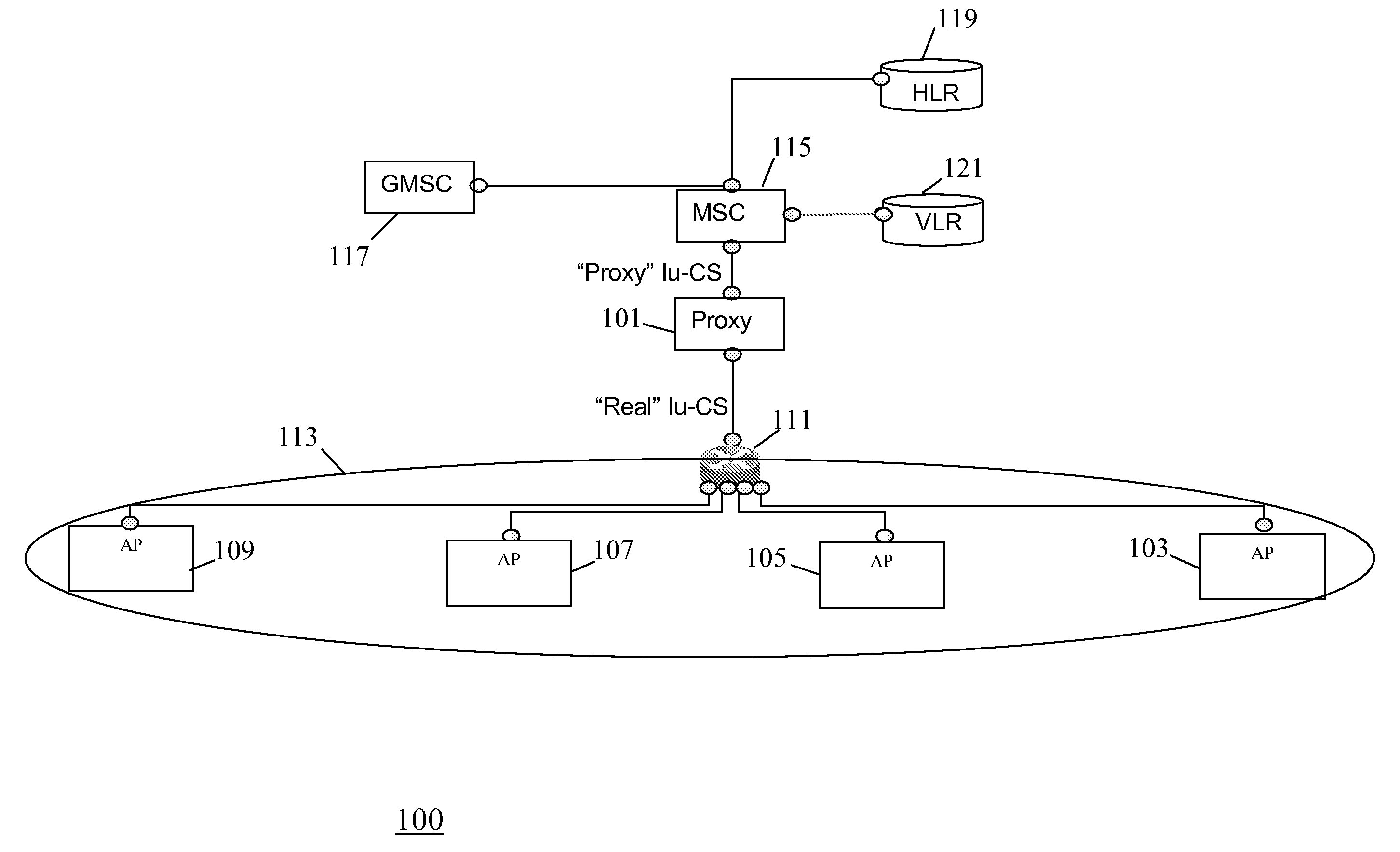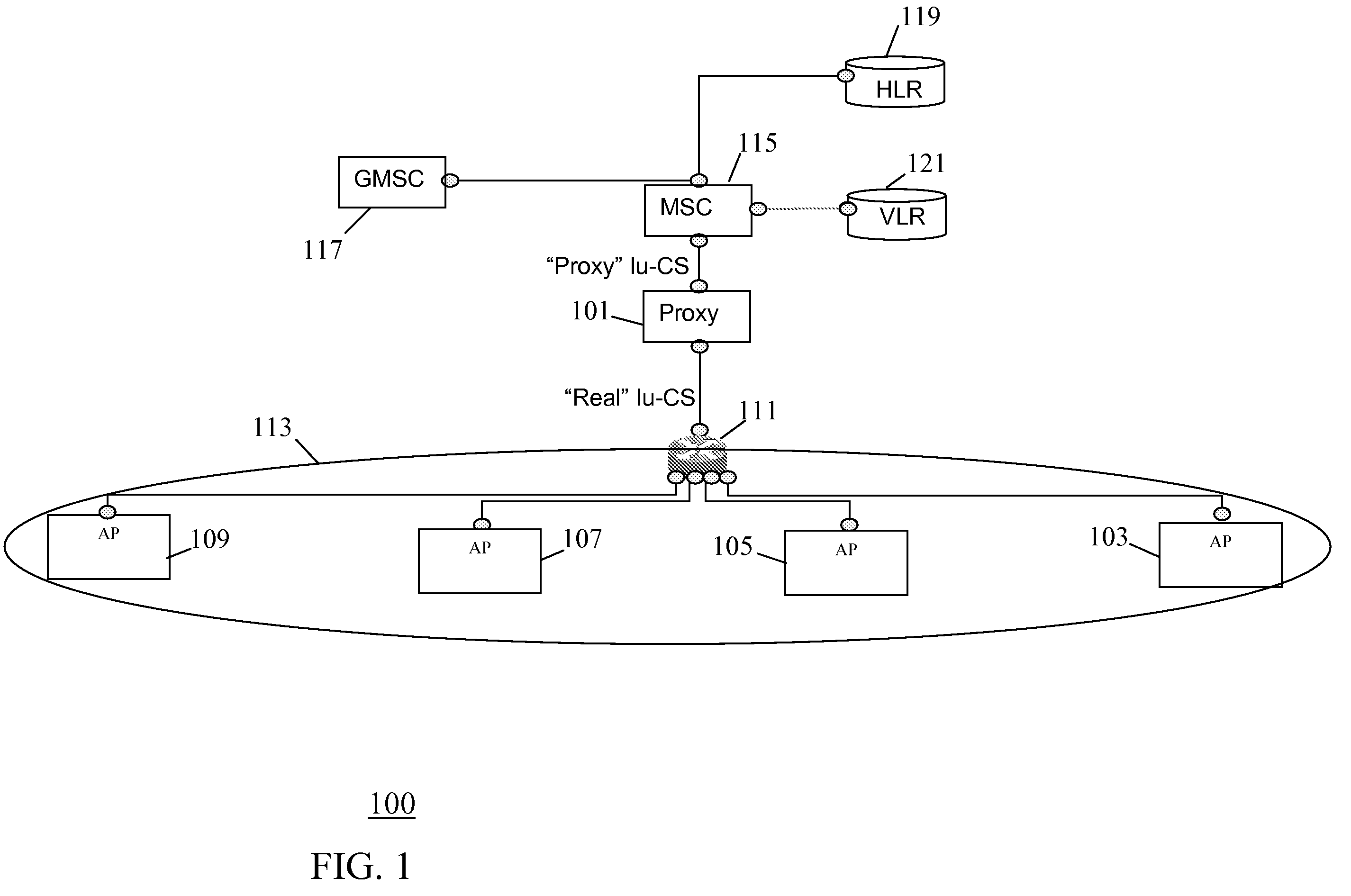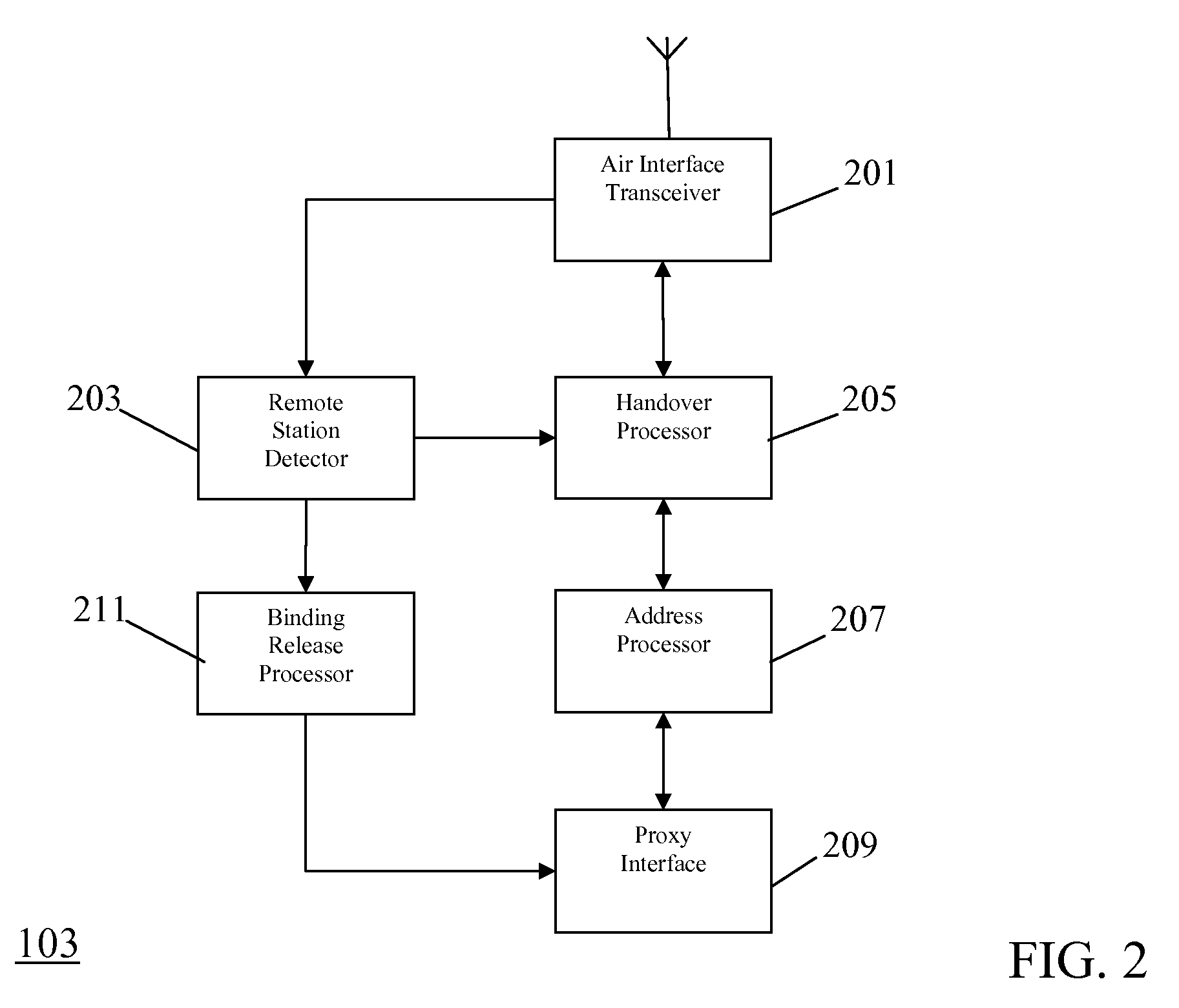Network for a cellular communication system and a method of operation therefor
network technology, applied in the field of network for a cellular communication system, can solve the problems of not being practicable to list every underlay cell, not being practicable to extend the current approach to scenarios where the mobile phone is used, so as to facilitate the deployment of a large number of underlay cells, improve addressing, and increase the effect of address spa
- Summary
- Abstract
- Description
- Claims
- Application Information
AI Technical Summary
Benefits of technology
Problems solved by technology
Method used
Image
Examples
Embodiment Construction
[0034]The following description focuses on embodiments of the invention applicable to a network for a UMTS cellular communication system and in particular to a system comprising a large number of access points supporting small underlay cells of a macrocell layer. However, it will be appreciated that the invention is not limited to this application but may be applied to many other systems.
[0035]Also the description will focus on embodiments in a circuit switched domain but it will be appreciated that the principles are equally applicable to a packet switched domain.
[0036]FIG. 1 illustrates an example of a network in accordance with some embodiments of the invention.
[0037]The network comprises an address proxy 101 which is coupled to a plurality of access points 103-109 via a router 111. In the example, each of the access points 103-109 comprises a UMTS picocell base station (Node B) which supports a small underlay cell of typically around 10-30 meters. Thus, each of the access points...
PUM
 Login to View More
Login to View More Abstract
Description
Claims
Application Information
 Login to View More
Login to View More - R&D
- Intellectual Property
- Life Sciences
- Materials
- Tech Scout
- Unparalleled Data Quality
- Higher Quality Content
- 60% Fewer Hallucinations
Browse by: Latest US Patents, China's latest patents, Technical Efficacy Thesaurus, Application Domain, Technology Topic, Popular Technical Reports.
© 2025 PatSnap. All rights reserved.Legal|Privacy policy|Modern Slavery Act Transparency Statement|Sitemap|About US| Contact US: help@patsnap.com



